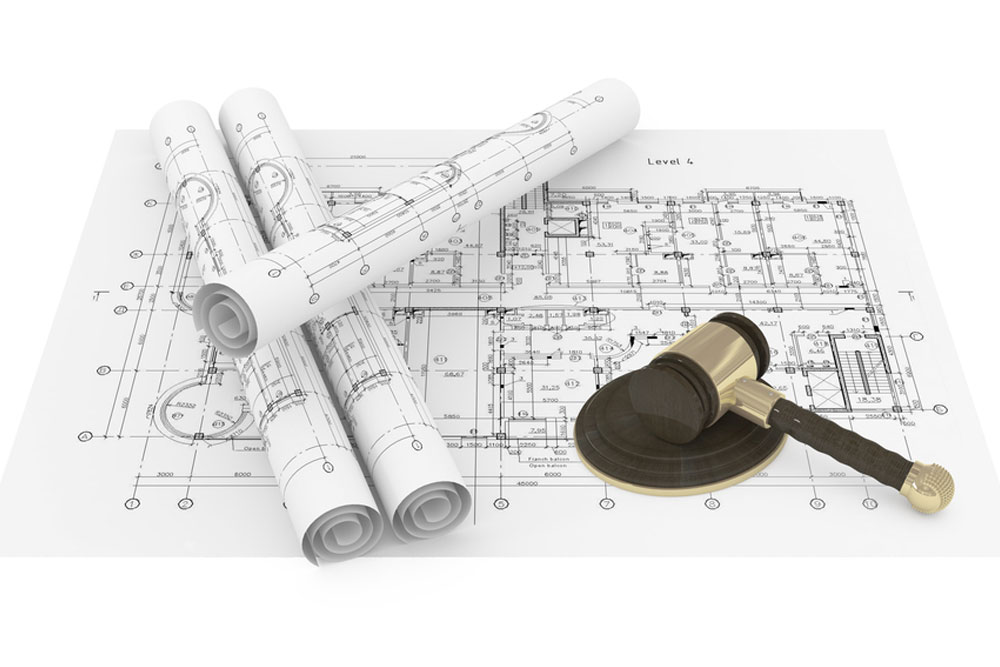In the competitive field of architecture, your designs are not just blueprints; they are the culmination of creativity, expertise, and hard work. Unfortunately, this also makes them vulnerable to copyright infringement, which can have serious implications for your practice. Understanding how copyright law applies to architectural designs and taking proactive steps to protect your work is essential for safeguarding your intellectual property. This blog provides insights into copyright protection for architects and strategies to mitigate the risk of infringement.
Understanding Copyright in Architecture
Copyright law grants creators exclusive rights to their original works, allowing them to control how those works are used and distributed. In the context of architecture, copyright protection extends to the following:
- Architectural Works: This includes the design of buildings and structures, as well as plans, drawings, and models. Architectural designs that exhibit originality can be protected under copyright law, provided they are fixed in a tangible medium.
- Blueprints and Drawings: The specific representations of architectural designs, such as blueprints, CAD drawings, and sketches, are also protected by copyright. This means that anyone who wants to use these works must obtain permission from the copyright holder.
- Architectural Renderings: Visual representations of architectural projects, such as 3D renderings and photographs, can also receive copyright protection.
It’s important to note that copyright does not protect the underlying ideas or concepts behind a design; rather, it protects the expression of those ideas. This distinction means that while another architect can create a similar building, they cannot copy your specific design elements without permission.
Why Protecting Your Designs is Crucial
- Maintaining Control: Protecting your architectural designs allows you to maintain control over how your work is used. This includes licensing your designs for specific projects or preventing unauthorized reproductions.
- Financial Implications: Copyright infringement can lead to financial losses if someone else profits from your work without compensating you. Ensuring proper copyright protection helps safeguard your revenue streams.
- Reputation Management: As an architect, your reputation is closely tied to the quality and originality of your designs. Infringement can dilute your brand and lead to negative perceptions in the industry.
Strategies for Protecting Your Architectural Designs
- Register Your Copyrights: While copyright protection is automatic upon the creation of an original work, registering your copyright with the U.S. Copyright Office provides additional legal benefits. Registration allows you to file a lawsuit for infringement and can increase your chances of receiving statutory damages and attorney’s fees in the event of a dispute.
- Use Copyright Notices: Including a copyright notice on your designs, plans, and marketing materials can serve as a deterrent to potential infringers. A simple statement like “© [Your Name/Your Firm] [Year]” clearly indicates ownership and asserts your rights.
- Create and Maintain Documentation: Keep thorough records of your design process, including drafts, sketches, emails, and communications with clients. This documentation can be valuable in proving the originality of your work in case of an infringement claim.
- License Your Designs: When working with clients or contractors, consider including licensing agreements that specify how your designs can be used. Clearly outline the scope of use, duration, and any restrictions. This not only protects your intellectual property but also establishes clear expectations with clients.
- Monitor for Infringement: Stay vigilant by monitoring the market for potential infringements of your work. Regularly check online platforms, publications, and competitor projects for unauthorized use of your designs. If you suspect infringement, consult with legal counsel promptly.
- Educate Your Team: Ensure that all members of your firm understand the importance of copyright protection. Provide training on how to handle design materials and the protocols for sharing work with clients and third parties.
- Utilize Non-Disclosure Agreements (NDAs): When sharing your designs with clients, contractors, or collaborators, consider using NDAs to protect your intellectual property. These agreements establish a legal obligation for parties to maintain confidentiality regarding your designs.
- Seek Legal Counsel: Consulting with an attorney who specializes in intellectual property and construction law can provide valuable guidance on copyright protection and strategies for safeguarding your work. They can help you navigate the complexities of copyright law and address any infringement issues that arise.
How We Can Help
At Stryker Slev Law Group, we understand the challenges architects face in protecting their designs from copyright infringement. Our experienced attorneys specialize in construction defect and commercial real estate law, offering comprehensive legal support tailored to the needs of architects in San Diego, Los Angeles, and Southern California.
Whether you need assistance with copyright registration, drafting licensing agreements, or addressing potential infringement claims, we are here to help. Our firm’s extensive knowledge of construction and intellectual property law positions us as a trusted partner for your legal needs.
If you’re an architect seeking to enhance your understanding of copyright protection and safeguard your designs, contact Stryker Slev Law Group today. Together, we can build a solid foundation for your success and protect your creative work in the competitive architectural landscape.



